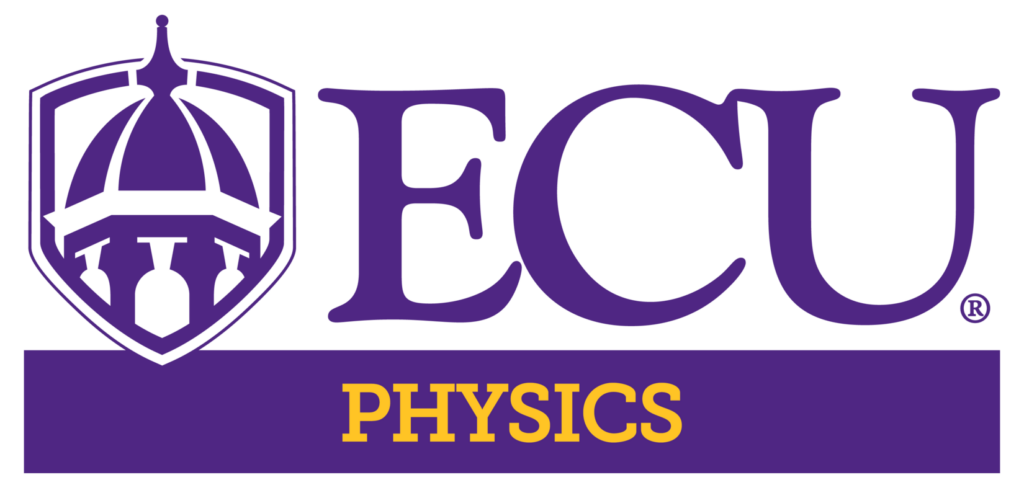Department History
Physics became a distinct unit within the Division of Science in 1963. Before that, it had been a part of the Department of Science, which was composed of four disciplines: biology, chemistry, physics, and science education. Official designation of Physics as a department occurred in 1965/66 when the Division of Science was dissolved, and the four disciplines became individual departments within the School of Arts & Sciences. Prior to 1965, the primary mission of the department, as well as the university, was teaching and service. With the establishment of our physics program came increased emphasis on research, which grew with our university. A brief timeline of our department is given below:
- 1963 — Department of Physics established
- 1965 — Traditional Bachelor of Science (BS) and Bachelor of Arts (BA) programs established
- 1969 — Department of Physics occupies the east wing of the Howell Science Complex building
- 1970 — Department of Physics hosts an NSF-sponsored conference for the solar eclipse of March 7, 1970 in Greenville
- 1970 — Traditional Master of Science (MS) program established
- 1971 — Accelerator Laboratory established
- 1971 — Bachelor of Science in Applied Physics (BSAP) program established
- 1974 — As part of an NSF grant, first personal computers in eastern North Carolina acquired for academic programs
- 1978 — Master in Physics (MP) program established, which would later become part of MS program with an option in medical physics
- 1996 — Biomedical Laser Laboratory established
- 1998 — Doctor of Philosophy (PhD) in biomedical physics established, making it the first doctorate on the main campus
- 1998 — Violin Acoustics Laboratory established
- 1999 — Biomedical Optics Laboratory established
- 2011 — Accelerator Laboratory renovated and a new NSF-funded accelerator installed
- 2012 — Optically Stimulated Luminescence (OSL) Laboratory established
- 2017 — Undergraduate physics programs reorganized into Research and Professional concentrations under the BS-Physics major
Program Evolution
The Department of Physics at East Carolina University established the master’s degree with a focus in medical physics in 1989 to complement the ongoing MS-level graduate program in applied physics initiated in 1970. The need for highly qualified medical physicists was well recognized at that time and the administration was in support of expanding the curriculum to meet the needs of the community. The medical physics program was established with the full partnership of the Department of Radiation Oncology of the East Carolina University School of Medicine. It was recognized that to be successful the program must have a strong clinical component and the Department of Radiation Oncology was firmly committed to that end. Several faculty members from the Department of Radiation Oncology maintain joint appointments, while others maintain adjunct appointments within the Department of Physics.
The first graduate of the Medical Physics MS (MS-MP), Ms. Pamela White, completed her degree in 1991. From the inception, the program has been very productive. Soon after, action was taken to limit the enrollment to 4 new students per year. This decision was implemented to maintain a sufficiently small enrollment to assure that adequate hands-on clinical training could be attained. It was felt that quality education was more important than quantity of students and that clinical hands-on experience was the defining factor in graduating qualified medical physicists. It has only been in recent years, based on increased staffing at the Department of Radiation Oncology, that the limit on the number of new students has been increased. Also, with the accreditation of the program in January 2006, a high number of quality students applied to the program. The last three years enrollment was stable around 15 students, accepting 6 to 8 new MS-MP students each year.
This increase in enrollment, combined with its commitment to clinical training, exemplifies the University’s dedication to a strong and sustained medical physics program. Since 1991, our medical physics graduates have accepted numerous positions ranging from staff positions at M.D. Anderson, Harvard University, and Duke University, to becoming medical physicists at regional hospitals in more than 10 states and two foreign countries. Several of our graduates are now in positions as chief medical physicist at local and regional hospitals, while others have accepted university appointments.
The PhD program in biomedical physics hosts approximately 20 doctoral students, with plans to accept 4 to 5 new doctoral students each year. Our master’s students have the benefit of an expanding research base and the ability to continue their education within East Carolina University. Recently, some of our PhD students have pursued MS-MP studies while simultaneously performing their doctoral research in medical physics and radiation biology. The PhD program also offers a concentration to allow highly qualified students to earn both the accredited MS-MP together with the PhD in biomedical physics.
Mission Statement
